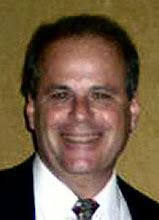Of course none of us were alive back then, so if we want to gain a sense of what life was like for the Jewish citizen of lower Manhattan, immigrant or not, we need to look at photographs taken during this time as well as read whatever we can about Jewish life then. This will properly feed our imagination.
One question we might wish to ask ourselves and imagine is how Jewish families spent what leisure time they might have had. It seems that for many, the Yiddish theatre was a welcome respite. Around the turn of the twentieth century, one could say that Boris Thomashefsky was the most well-known actor in the Yiddish theatre. Actresses such as Bertha Kalich also excelled on the Yiddish stage, mostly in New York City.
You might like to visit the Museum's single-page exhibition on this subject which will give you a glimpse into Jewish life at the turn of the twentieth century on the Lower East Side and Bowery, and how our families and our fellow Jews spent some of their leisure time.
Here are several excerpts from the exhibition:
This exhibition, entitled "The Yiddish Theatre: Classic and Romantic Drama in East Side Jargon," can be found at www.museumoffamilyhistory.com/yw-yt-bowery-1900.htm .The Russian immigrant on the East Side has the help of his family in his work, and his family usually shares his pleasures. He has little inclination in the direction of sprees, and while some of his countrymen frequent the coffee houses where they play games and smoke, and others go to the clubs of which there are many in the district, nearly all the toilers of the sweatshops go to the theatre; and they go not singly or in pairs, but in family groups...For that reason, a Yiddish theatre audience is unlike that of any other playhouse in the city.
The storekeepers close their places of business on Friday at sunset, and after coming from the synagogue they look for amusement. The strictest Sabbatarians see no wrong in going to the theatre.
The East Side pushcart man, the little shopkeeper and the prosperous merchant, the sweatshop worker and the Divisionist milliner, the jewel and gold bedecked wife of the successful ward politician, are all represented in their true colors in these plays; but behind all, pointing a moral and reminding them of their duties as citizens and men, is the rabbi or the religious teacher, pointing out the ills that follow sin, and in some of the popular plays laying particular stress on the crime of apostasy. The "bad man," the "scheming villain," is often an apostate, whose career in the part is made unusually burdensome by the hisses which greet him every time he appears.
The opening lines of the actors are usually lost, except to those people who sit far in front, and demands for silence come from all parts of the auditorium. Sometimes these are in the form of the hissing "Pst! pst!" which one hears in all European theatres, and sometimes the more imperative "Ruhig," " 'Smaul halten!" or "Still!" are heard. Then comes the play, and close attention on the part of the audience, frequent applause and boisterous laughter and sniffles are sure to reward the efforts of the actors.
If you have more than a fleeting interest in the Yiddish theatre of the late nineteenth or early twentieth century, you should consider visiting the Museum's exhibition about the posters or placards that were once used to advertise Yiddish theatrical productions on the Lower East Side and the Bowery. This exhibition, "Placards of the Yiddish Theatre," can be found at www.museumoffamilyhistory.com/yt-placard-toc.htm .




No comments:
Post a Comment